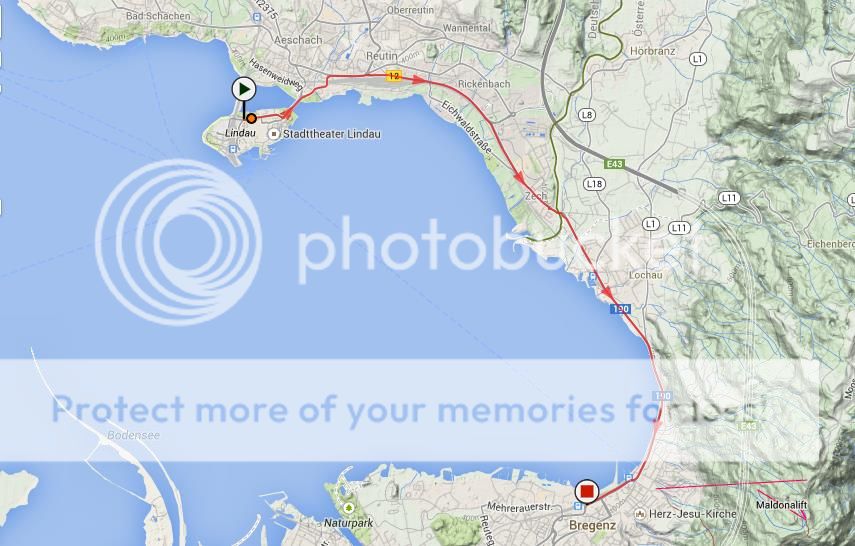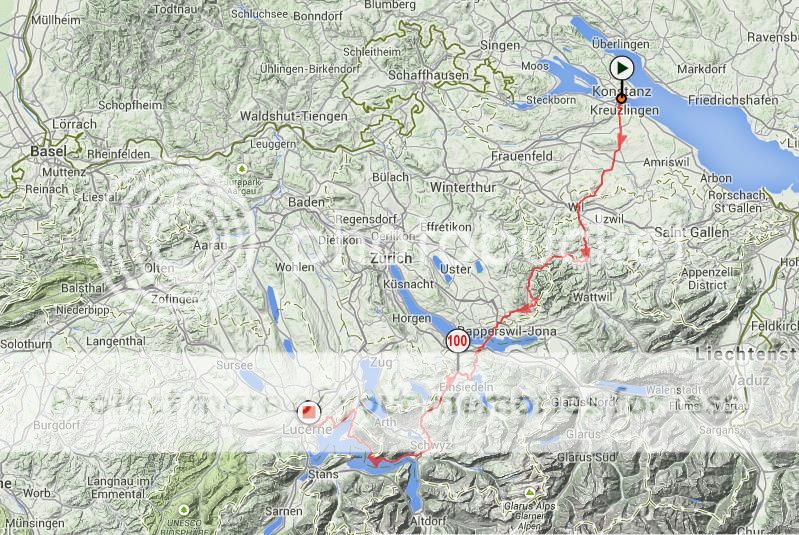Now that it has been euthanized into the "Brussels Cycling Classic", Paris-Bruxelles has become a thing of the past. Which is kind of sad, but at the same time in recent years the race had become something of a sprinter's classic, with the climbs like the Keperenberg no longer breaking up the race and a winners' list in recent years including Fran Ventoso, Denis Galimzyanov and Robbie McEwen no fewer than five times. Obviously, these are not the names you would see up in the mix in, say, de Ronde. The revision of the race to a purely Belgian affair has led to two editions that end in bunch sprints too.
I have brought back the old Paris-Bruxelles in terms of start and finish (Soissons - Bruxelles if we want to get technical), but previous key climbs like the Alsemberg and Keperenberg have been discarded in favour of a tougher route with some serious cobbles. The race distance has also been bumped up from 220km to 240km.
The race has 21 obstacles, the final 13 of which are in the final 60 kilometres. Some are easier than others. The distance to the finish will be noted with each.
1. Côte de Laffaux (1,8km @ 4,4%, tarmac) - 233,6km
A gradual climb not far outside Soissons that is a mere intro to the day.
2. Laon (2,0km @ 4,7%, tarmac) - 206,2km
A
picturesque walled town that I have always wanted to host a Tour de Picardie stage along similar lines to the Mont Cassel stage of Dunkerque in recent years. There are several routes up to the top of the town and a few stretches of cobbles in the town centre.
3. Côte de Saint-Gobert (1,6km @ 3,6%, tarmac) - 174,8km
Another gradual climb heading north toward
Vervins. On a main road and very straight.
4. Côte de la Croix de Foigny (1,3km @ 6,0%, tarmac) - 156,7km
The first climb with any serious ramps, getting up to 10% on quite a narrow road, although we're still way away from anywhere decisive and the route is still tarmac at this point.
5. Côte de la Rue des Marais (1,9km @ 3,5%, tarmac) - 149,3km
A bumpy climb from Wimy that follows almost straight on from Croix de Foigny as we leave the Aisne département and enter Nord south of Fourmies.
6. Côte des Beaux Sarts (1,0km @ 5,2%, tarmac) - 124,0km
A short drag up to the former sanatorium that is
L'Hôpital de Liessies, and also serves as our final climb in France before passing by Jeumont & into Belgium.
7. Rue Alphonse Parent (550m @ 5,4%, kasseien) - 79,2km
Our first cobbled climb is
this stretch of not-especially challenging road from Rue Haute to Rue Alphonse Parent in La Louvière. It is mostly consistent.
8. Mariemont (500m @ 7,2%, kasseien/tarmac) - 75,5km
This is our first serious climb, and where the first selections could be made. The main body of this climb is
Rue Nazareth, a cobbled ascent of 350m averaging as near as can be to 10%. Riders however get a bit of respite after this, though, so wanting to get away here would mean a group would need to work together ahead of the upcoming obstacles. And much of the stretch between this and the next obstacles are major roads & dead straight as well.
9. Rue Felicien Canart-Rue Henri Tombeur (3,2km, kasseistrook) - 56,4km
The longest single stretch of cobbles in the race, this difficult patch of racing around the village of Bornival
is mostly on well-maintained cobbles. In the middle of it there is a
climb of roughly 1,7km @ 3,6% with a maximum of 9%, but I have not counted this separately as it comes in the middle of the cobbled stretch, with both cobbles before & after. The sector ends on
Rue Henri Tombeur before turning back to the north.
10. Côte de Fauquez (1,0km, 4,5%, tarmac) - 51,3km
A
brief, tarmacked berg between two difficult kasseistrooken
11. Rue de la Ferme du Pré (1,5km, kasseistrook) - 43,8km
Like the stretch around Bornival, this long stretch of cobbles hides a climb - this is the
Côte de la Ferme du Pré, 500m at 6,8% with a maximum of 11%, disguised as the
opening third of a longer stretch of cobbles - after the ascent is done with there is another kilometre of mostly flat cobbled road to deal with. This is also one of those stretches where there is no way to cheat, with high verges and no real crown in the road either.
12. Côte de Sainte-Croix (500m, 7,0%, kasseien/tarmac) - 35,5km
The next climb is a short but nasty one; we are climbing the first 500m of
this profile, keeping all the most brutal bits. The section from 200m to 500m is on the steep
Rue des Comtes de Rubiano, the last 200m of which as you can see is on cobbles.
13. Rue de la Vallée (300m, kasseistrook) - 34,9km
There is literally 300m of respite after the Côte de Sainte-Croix before the riders have a flat, slightly downhill stretch of further cobbles on
Rue de la Vallée. These ones are in a somewhat worse condition as well.
14. Dikkemeerweg (1,0km @ 5,3%, kasseien) - 27,2km
With a maximum gradient of 11% and some
really nasty cobbles, this could be where the moves begin to be made in earnest. This is
not a pretty sight for the riders, and
should force a selection if nothing else. This is here as my replacement for the Alsemberg.
15. Grote Hertstraat (1,75km, kasseistrook) - 24,4km
Barely a kilometre after cresting Dikkemeerweg, the riders have a brief stretch on some narrow bricked roads before taking on nearly 2km of further cobbles. Mostly flat but occasionally sauntering vaguely downhill, these are
probably the worst condition cobbles the riders will face all day. Any selection forced on Dikkemeerweg will surely be able to consolidate an advantage here, as well as giving a platform to attack for the more skilled bike handlers.
16. Rollebeekstraat (700m @ 7,3%, kasseien) - 20,7km
Now on the outskirts of Beersel, the riders face another difficult climb. With a maximum of 13%,
Rollebeekstraat is a difficult but not super tough climb on its own, but with the likely gaps being forced and the lack of room into which riders can escape the cobbles there are moves to be made here.
17. Kasteelstraat (200m @ 4,0%, kasseien) - 20,3km
Yes, you read that right - only 200m tarmac before the next stretch of kasseien, on
the last part of Kasteelstraat. Kasteelstraat is actually a longer cobbled climb, but it crosses the tarmac road partway up; Kasteelstraat and Rollebeekstraat are parallel, and Rollebeekstraat is slightly tougher, so I have gone with it before a short blast of Kasteelstraat before descending towards Brussels.
18. Sint-Sébastiaanstraat (300m @ 6,3%, kasseien) - 16,7km
Unfortunately my route did not allow me to add the short but tough Beukenstraat without adding a long tarmac section between climbs or a circuit so short racing would become confused and impossible to regulate. So instead I've taken on this smaller but still interesting climb in Linkebeek. Again it's short, but it's
shadowy and sinister, maxing out at 13% near the railway station. It is a good opportunity for a rider with a small gap from the previous climbs to get themselves out of sight and out of mind.
19. Beukenberg (400m @ 7,0%, kasseien/tarmac) - 11,7km
Now in the Brussels suburb of Uccle/Ukkel, the final climbs come beginning with this one, which starts with a
short, sharp cobbled city street averaging 10% for 200m, before flattening out on tarmac.
20. Avenue Vanderaey (600m @ 4,8%, kasseien) - 9,9km
The final marked ascent of the day (there is a brief rise on Chaussée d'Ixelles a little later that could see attacks if a group is still together) is this mostly consistent at around 5% drag through
suburban, well-maintained cobbled streets.
21. Palais de Bruxelles/Koninklijk Paleis van Brussel (600m, kasseistrook) - 1,9km
The last cobbles of the day are, much like Roubaix, a ceremonial stretch in effect, on Place de Palais in front of
the Royal Palace and around.
After this we have the descent of the Coudenberg, Rue de l'Hôpital and Rue du Lombard before passing the
Bourse and sprinting to the finish line at
Place de Brouckere. The final 550m are dead straight in case there's a possibility of a sprint, but really this shouldn't be a bunch finish anymore.




















































